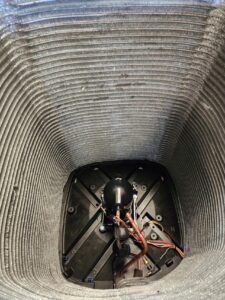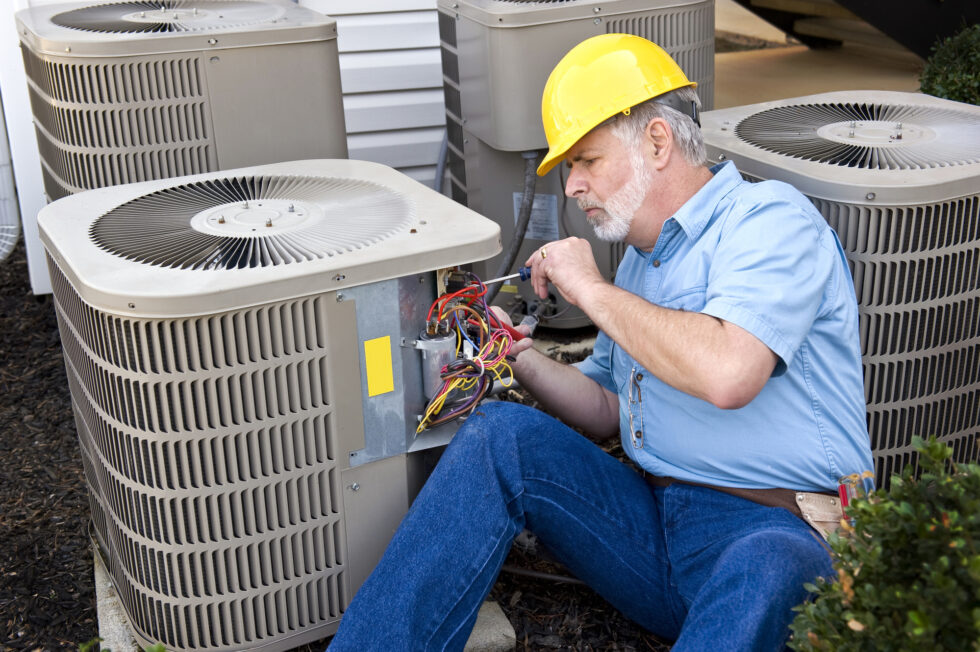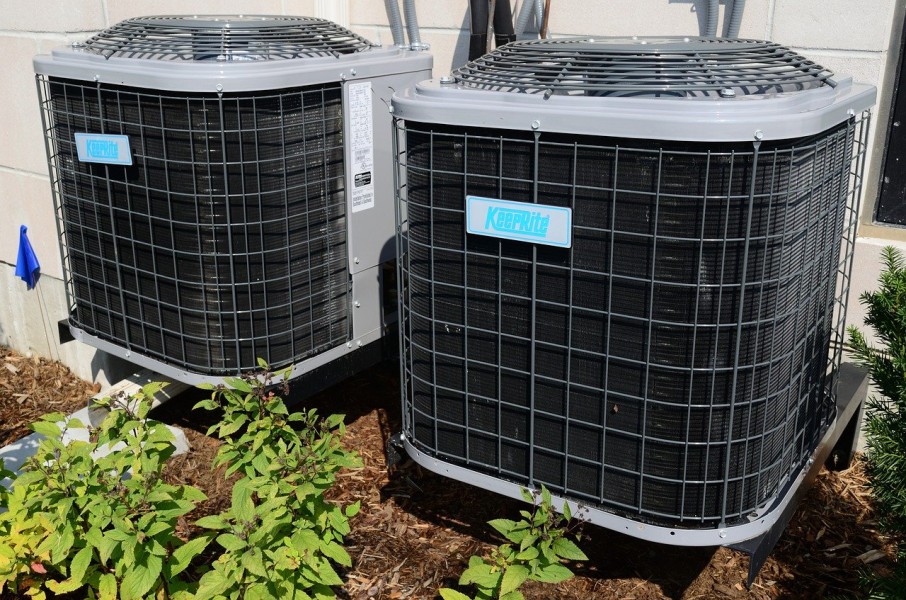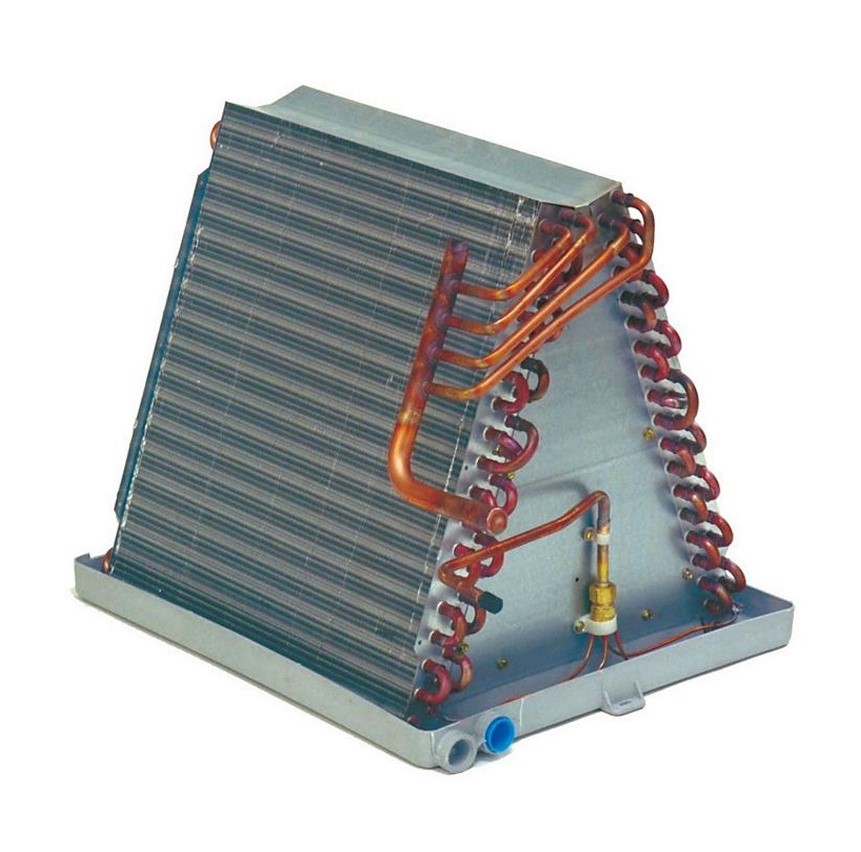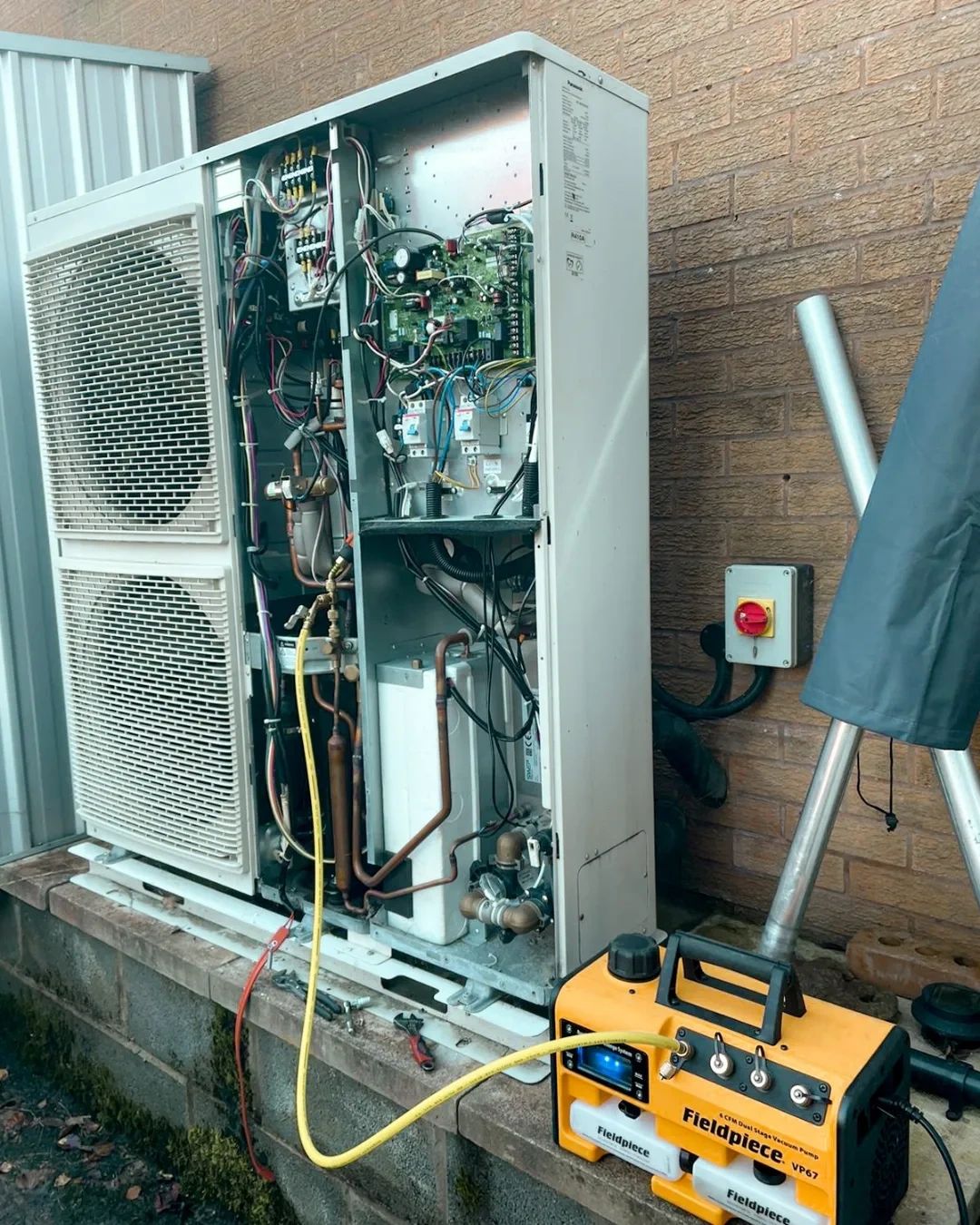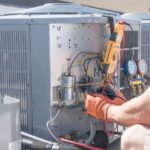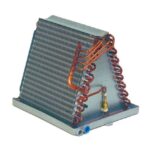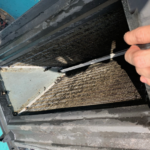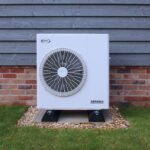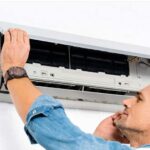Types of AC coils
A central air conditioner consists of two main units: the indoor unit, housing the evaporator coil, and the outdoor unit, containing the condenser coil. These coils’ roles are very vital for air conditioning process.
The air conditioning system has two types of coils; these include:
- Evaporator coil
- Condenser coil
Evaporator Coil: The indoor unit typically includes a furnace and an evaporator coil or fan coil. Positioned (located) on the air intake side of the fan coil or the outlet side of the furnace, the evaporator coil, also known as the cooling coil. The function of the evaporator coil is to extract heat from indoor air, enabling the blower fan to circulate cool air back into the home.
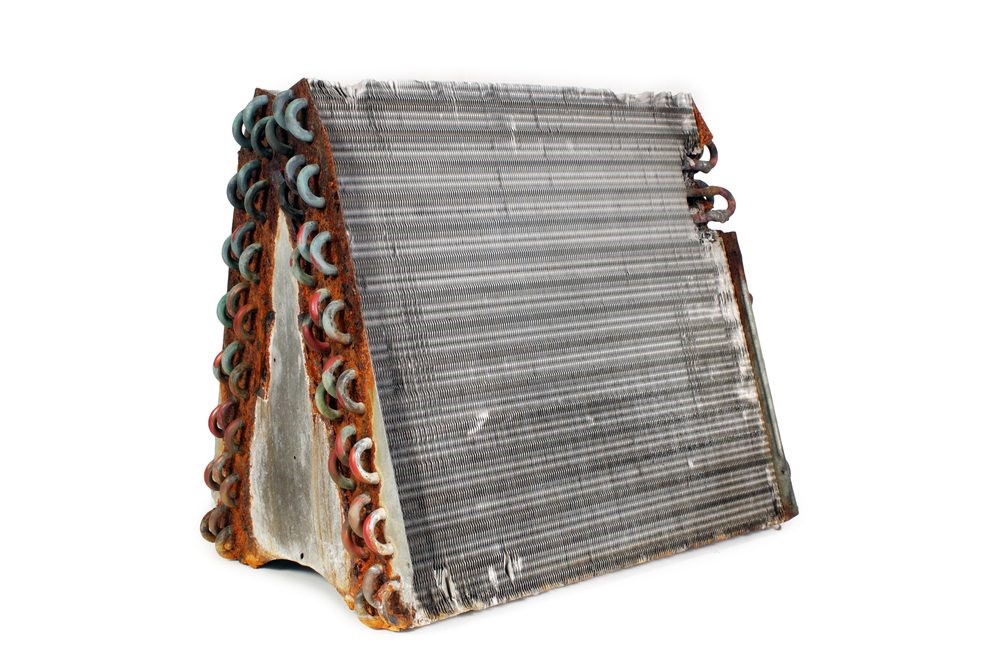
Condenser Coil: located or Situated in the outdoor unit, the role of the condenser coil is to releases the captured heat outside. Its typically constructed of copper tubing with thin aluminum strips known as fins, these coils facilitate the transfer of heating energy into and out of the home. Various coil designs and compositions exist, such as all-aluminum coils or spine fin coils, enhancing the airflow efficiency for optimal cooling.
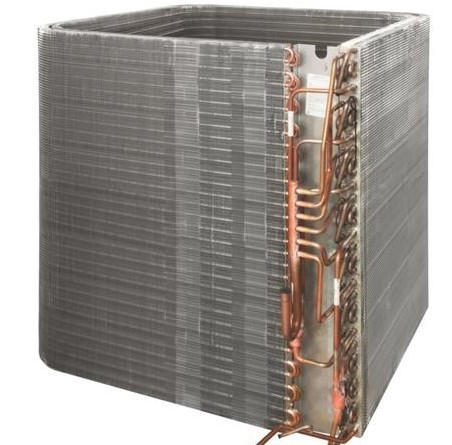
Importance of Clean Coils: Clean coils are crucial for the efficient operation of the cooling process in an air conditioning system. While it may seem like a DIY project, expert cleaning is often the most effective method.
Importance of cleaning Air conditioning coils (AC coils)
The Crucial Impact of Clean AC Coils on Your Cooling System
Clean air conditioning coils are fundamental to the efficient operation of your cooling system. Understanding why keeping these coils pristine is crucial can help prevent potential issues and ensure optimal performance.
Importance of Clean AC Coils:
1. Heat Transfer Efficiency: The proximity of coil fins, moisture accumulation, and the airflow across them create an environment prone to accumulating dirt, dust, and pollutants. This buildup hampers the system’s ability to transfer heat effectively, reducing its efficiency in cooling your home during summers.
2. Impact on Airflow: Excessive buildup of dirt, dust and debris on coils can impede or obstruct airflow, disrupting the cooling process. This obstruction leads to discomfort within your home and an increase in utility bills due to reduced energy efficiency.
Effects of Dirty AC Coils:

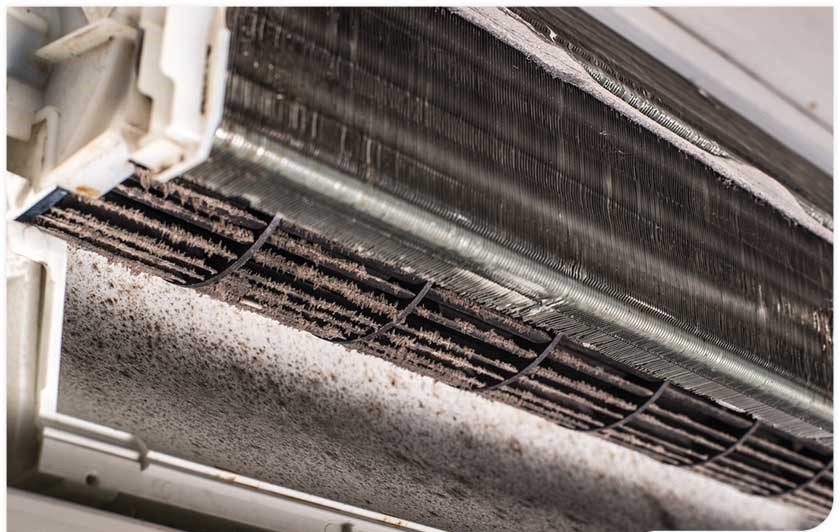
- Increased Operating Temperatures: Accumulated debris forces system components like fans and compressors to work harder, elevating operating temperatures to maintain desired indoor comfort.
- Decreased Cooling Efficiency: The buildup on coils forces them to work harder to manage heat, resulting in reduced efficiency and increased operating costs.
- Reduced Comfort and Humidity Control: Dirty coils diminish the system’s ability to remove humidity effectively, affecting overall comfort levels indoors.
- System Repairs or Replacement: Overworked components can lead to breakdowns, necessitating service calls, component replacements, and in severe cases, complete system replacements.
- Risks of System Wear: Blocked evaporator coils strain compressors, causing stress on the entire system. Protecting the compressor is essential to avoid costly repairs.
Conclusion: Maintaining clean air conditioning coils is pivotal for optimal cooling system functionality. It ensures efficient heat transfer, lower operating temperatures, reduced utility costs, and ultimately, a prolonged system lifespan. Regular maintenance and cleaning of these coils are essential steps in preserving the efficiency and longevity of your air conditioning system.
HOW OFTEN SHOULD AC COILS BE CLEANED?
Clean AC coils annually, or every three months if exposed to excessive dirt. Delicacy demands gentle cleaning; hire a professional for precise care to avoid costly damage.
The frequency of cleaning your AC coils depends on your environment and the unit’s susceptibility to dirt accumulation. Regular maintenance is crucial, but the delicacy of these components calls for gentle cleaning practices. Consider hiring a professional for meticulous and safe cleaning, ensuring your system operates efficiently without risking damage to its sensitive parts.
How to clean air conditioner coils?
cleaning air conditioner coils is essential for a comfortable home and a well-working system. These coils are crucial for transferring heat, but they have delicate fins that need gentle handling during cleaning to prevent any harm. That’s why we recommend calling in a professional regularly to clean your coils. Having a trained expert work on your air conditioner is the best way to guarantee its efficiency and long life. These pros know how to clean AC coils properly and can even check your system before the warm weather kicks in to make sure everything runs smoothly. Understanding how the coil cleaning process works can help you know what to expect and better talk about any worries you have with your local HVAC dealer.
How to access AC coils?
Air conditioning systems come with two AC coils: the indoor evaporator coil and the outdoor condensing coil.
Starting Steps Before Cleaning AC Coils
If you’re up for cleaning your AC unit yourself, get ready to dedicate some time to it. Here’s a step-by-step guide:
- Turning off the AC: To start, safety comes first. Turn off your AC unit from the thermostat. Then, head to your circuit breaker panel and find the breaker connected to your AC outlet. Switch it off to cut the power to your AC completely.
- Opening the AC Unit: To access the evaporator coils, you’ll need to open the door of your outdoor AC blower unit. It might involve removing screws holding the door in place, and in some cases, taking off foil duct tape. Just keep in mind that attempting this on your own could void any warranties if any.
The indoor coil or evaporator coil might be attached to your furnace or kept inside a fan coil or air handler unit. Your HVAC technician usually reaches this coil through an access panel that often requires a nut driver or screwdriver to remove.
On the other hand, the outdoor condenser coil wraps around the unit’s interior parts and acts as the outer walls of the outdoor unit. It is shielded by a strong wire coil guard or a more protective metal panel. Sometimes, the outer cover and top might need to come off to access these coils.
Once they’re reachable, the HVAC technician inspects and cleans them according to the manufacturer’s recommendations. This could involve using a special tool to straighten any bent fins.
Methods of cleaning Air conditioning coils
1. Cleaning AC coils using compressed air
Cleaning AC coils using compressed air is a straightforward process that ensures your system stays efficient. There are different steps involved in this process:
- Compressed Air for Light Dirt: If there’s only a light buildup of dirt on your coils, compressed air is effective. Direct the airflow against the normal direction of air movement across the coil. Ensure a consistent airflow, wear eye protection, and use a shop vac to collect dislodged debris.
- Using Compressed Air, Shop-Vac, and Cleaner: For heavier dirt, a combination of compressed air, a shop-vac, and approved coil-cleaning chemicals is recommended, especially for the outdoor condensing coil. Avoid using compressed air on indoor coils as it can blow dust inside the home.
Method for Outdoor Coil Cleaning: When using compressed air on an outdoor coil, blow the air opposite to the normal airflow direction. This pushes air through the cleaner side back through the dirtier side. Ensure to blow air straight through the fins to prevent bending, as they’re delicate. The shop-vac helps remove dislodged debris.
Removing Stubborn Buildup: For more stubborn dirt, a household detergent or a specialized coil cleaning solution can be used after the initial cleaning with compressed air and vacuuming.
These steps help remove loose surface materials from the coils, maintaining their efficiency. Always follow manufacturer recommendations and consider professional assistance for thorough cleaning.
Cleaning air conditioning coils using Detergent or soap and water
Sure, here’s a step-by-step guide for cleaning AC coils using detergent and water:
- Prepare a mixture of warm water and standard dish soap in a spray bottle.
- Apply the soapy solution to the coils and let it settle for a moment to break down the dirt.
- Gently scrub the coils with a soft brush to remove the dirt.
- Rinse off any soapy residue thoroughly from the coils.
- Once the coils are clean, move on to cleaning the rest of your AC system.

When you use water from the pressure sprayer
- Use a mild household detergent mixed with water and apply it to the coils using a low-pressure sprayer.
- Let the solution drain naturally or lightly rinse the coils with a garden hose, repeating the process if needed.
- Ensure any hired contractors use a low-pressure sprayer to avoid damage of the fins. If the fins are bent or broken, it can make air move less smoothly and could make the AC less effective at cooling.
- Make sure the detergent they use isn’t highly acidic. Acidic cleaners can harm the copper and alloy metals in the coil, leading to corrosion and a shorter lifespan for the coil.

These steps will effectively clean your AC coils using detergent and water, maintaining the system without causing any damage. Always handle tools and products carefully to prevent any potential harm.
AC coils cleaning using commercial cleaners
Here’s a guide to clean your AC coils using commercial cleaners:
- Outdoor Coil Cleaning:
- Get a coil cleaning solution made for this job, like foaming cleaners meant for outdoor use.
- Look for these cleaners in spray cans or get them in bulk for a low-pressure sprayer.
- Remove any surface dirt from the outdoor coil using a hand or a special brush.
- Apply the commercial cleaner as instructed and rinse the coil with water, following the cleaner’s instructions and the manufacturer’s advice.
- Indoor Evaporator Coil Cleaning:
- Use a mild detergent and water to clean the indoor evaporator coil.
- Start by removing larger debris by hand or with a special brush.
- Then, follow up with a gentle cleaning using water and mild detergent.
By following these steps, you can effectively clean your AC coils using commercial cleaners. Always stick to the instructions provided and recommended by the manufacturer for best results.
Cost of cleaning air conditioner coils
How much is ac coil cleaning?
On average the cost of cleaning AC coils using a professional HVAC Technician ranges from $80 $450
Keeping your air conditioner coils clean is a smart move, but hiring an HVAC professional might be the best bet. While some homeowners consider DIY cleaning, regular professional services are actually cheaper than facing hefty repair bills caused by neglecting this maintenance task. HVAC dealers often offer affordable “clean and check” deals or service contracts covering regular cleanings, inspections, and even repair discounts. This investment pays off with a longer system life, better energy efficiency, lower operating costs, increased comfort, and reduced risk of major repairs. For top-notch care, reach out to your local Carrier HVAC expert for a service appointment. They’ll ensure your AC runs smoothly and efficiently all season long.
Additional AC Components to Clean or Service
Here are essential steps to maintain other components of your AC:
Check the Drain Plug:
The drain plug helps remove condensation from your home, but it can get clogged, usually with algae and mold. Newer units may detect and stop when clogged, but older ones might keep running, causing leaks. To unclog it, locate the drip pan, remove water using a wet/dry vac, and try unclogging with an air compressor. If unsuccessful, call a professional.
Clean Around Your AC Unit:
Use a hose to clear dirt and cobwebs around the unit. Debris can obstruct airflow, making the AC work harder. Also, check the base for settled dirt that could make the unit unlevel and lead to future issues.
Replace AC Filters:
Change your AC filters every 3 months, especially if you have shedding pets. For ductless mini-splits, vacuum and soak their filters to remove debris.
These steps ensure a well-maintained AC system, preventing potential issues and ensuring efficient operation.

